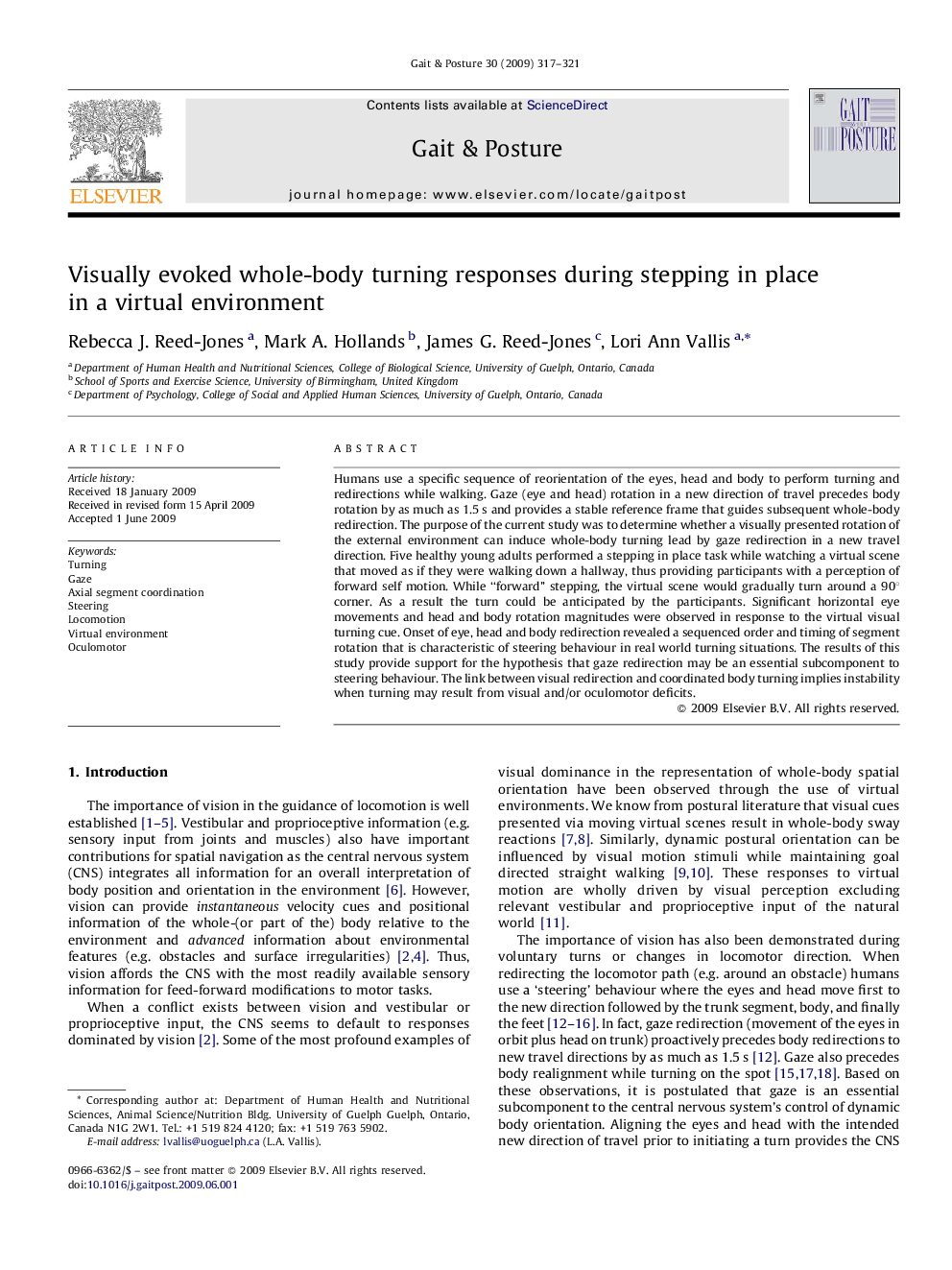| Article ID | Journal | Published Year | Pages | File Type |
|---|---|---|---|---|
| 4057267 | Gait & Posture | 2009 | 5 Pages |
Humans use a specific sequence of reorientation of the eyes, head and body to perform turning and redirections while walking. Gaze (eye and head) rotation in a new direction of travel precedes body rotation by as much as 1.5 s and provides a stable reference frame that guides subsequent whole-body redirection. The purpose of the current study was to determine whether a visually presented rotation of the external environment can induce whole-body turning lead by gaze redirection in a new travel direction. Five healthy young adults performed a stepping in place task while watching a virtual scene that moved as if they were walking down a hallway, thus providing participants with a perception of forward self motion. While “forward” stepping, the virtual scene would gradually turn around a 90° corner. As a result the turn could be anticipated by the participants. Significant horizontal eye movements and head and body rotation magnitudes were observed in response to the virtual visual turning cue. Onset of eye, head and body redirection revealed a sequenced order and timing of segment rotation that is characteristic of steering behaviour in real world turning situations. The results of this study provide support for the hypothesis that gaze redirection may be an essential subcomponent to steering behaviour. The link between visual redirection and coordinated body turning implies instability when turning may result from visual and/or oculomotor deficits.
